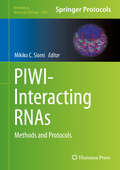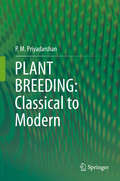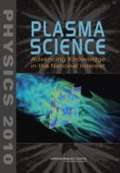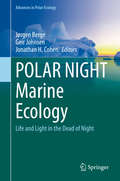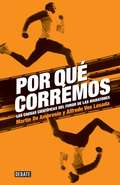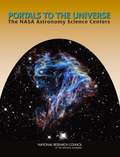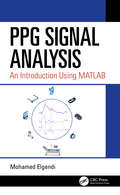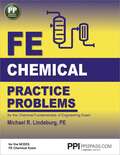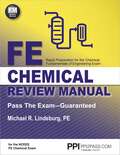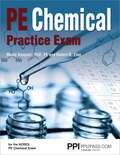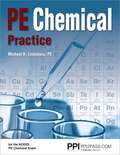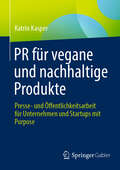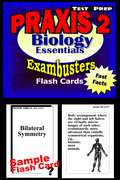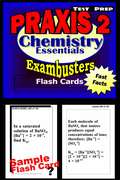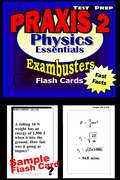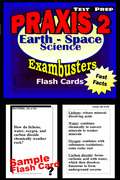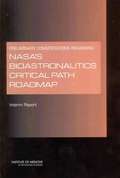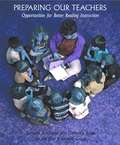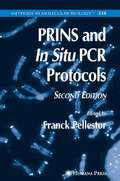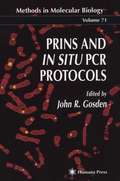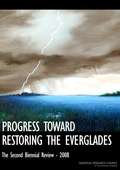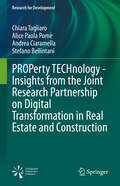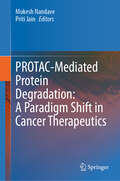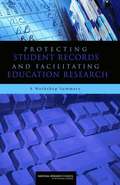- Table View
- List View
PIWI-Interacting RNAs
by Mikiko C. SiomiPIWI-interacting RNAs (piRNAs) are the third and most-recently discovered group of silencing-inducible small RNAs in animals. PIWI-Interacting RNAs: Methods and Protocols provides the most recent methods and protocols for studying piRNAs in the gonads of a wide range of species, as well as in any other organs where piRNAs may be detected. Comprehensive high-throughput sequencing analysis of piRNAs in embryos, testes and ovaries of D. melanogaster, as well as in mouse and rat testes, has raised the profile of piRNAs and thus further accelerated piRNA studies. In addition to C. elegans, other model species such as Drosophila melanogaster, Arabidopsis thaliana and mice, along with cultured cell lines such as HeLa and Drosophila Schneider 2 (S2), and other such organisms have been used to address the fundamental questions of the biogenesis and functions of RNAi-triggering small non-coding RNAs. Written in the successful Methods in Molecular Biology series format, chapters include introductions to their respective topics, lists of the necessary materials and reagents, step-by-step, readily reproducible protocols, and notes on troubleshooting and avoiding known pitfalls. Authoritative and easily accessible, PIWI-Interacting RNAs: Methods and Protocols seeks to serve both established researchers and newcomers to the field to progress towards the ultimate goal of understanding the mechanisms and actions of piRNAs.
PJ Time: 100 Bedtime Devotions to Light Up the Night
by Thomas NelsonYoung kids will learn fascinating nature facts as they grow in faith and settle down for peaceful sleep with these fun, short devotions about the wonders of the dark in the animal world, ocean, and night sky.Each of the 100 bedtime devotions explores an engaging nighttime topic: sleeping otters holding hands, the moon's glow, multiplying bubbles at bath time, and saying good night to God. Each entry includes cheerful illustrations and a final reflection on how to act out Jesus' love and truth.This delightful devotional for boys and girls ages 4–8 gives kids a fun way to close out the day withAdorable and amazing animals, incredible science facts, and the mysteries of the darkBible verses from the Old and New TestamentsPrayer starters to guide children in talking to God about their specific triumphs, struggles, and questionsQuiet time before sleepPJ?Time?is a wonderful way to help kids cozy up in their favorite PJs, spend time with God, and fall asleep knowing that God is always awake.
PLANT BREEDING: Classical to Modern
by P. M. PriyadarshanThis book offers a detailed overview of both conventional and modern approaches to plant breeding. In 25 chapters, it explores various aspects of conventional and modern means of plant breeding, including: history, objective, activities, centres of origin, plant introduction, reproduction, incompatibility, sterility, biometrics, selection, hybridization, methods of breeding both self- and cross- pollinated crops, heterosis, synthetic varieties, induced mutations and polyploidy, distant hybridization, quality breeding, ideotype breeding, resistance breeding, breeding for stress resistance, G x E interactions, tissue culture, genetic engineering, molecular breeding, genomics, gene action and varietal release. The book’s content addresses the needs of students worldwide. Modern methods like molecular breeding and genomics are dealt with extensively so as to provide a firm foundation and equip readers to read further advanced books. Each chapter discusses the respective subject as comprehensively as possible, and includes a section on further reading at the end. Info-boxes highlight the latest advances, and care has been taken to include nearly all topics required under the curricula of MS programs. As such, the book provides a much-needed reference guide for MS students around the globe.
PLASMA SCIENCE: Advancing Knowledge in the National Interest
by Plasma 2010 CommitteeAs part of its current physics decadal survey, Physics 2010, the NRC was asked by the DOE, NSF, and NASA to carry out an assessment of and outlook for the broad field of plasma science and engineering over the next several years. The study was to focus on progress in plasma research, identify the most compelling new scientific opportunities, evaluate prospects for broader application of plasmas, and offer guidance to realize these opportunities. The study paid particular attention to these last two points. This "demand-side" perspective provided a clear look at what plasma research can do to help achieve national goals of fusion energy, economic competitiveness, and nuclear weapons stockpile stewardship. The report provides an examination of the broad themes that frame plasma research: low-temperature plasma science and engineering; plasma physics at high energy density; plasma science of magnetic fusion; space and astrophysical science; and basic plasma science. Within those themes, the report offers a bold vision for future developments in plasma science.
POLAR NIGHT Marine Ecology: Life and Light in the Dead of Night (Advances in Polar Ecology #4)
by Geir Johnsen Jørgen Berge Jonathan H. CohenUntil recently, the prevailing view of marine life at high latitudes has been that organisms enter a general resting state during the dark Polar Night and that the system only awakens with the return of the sun. Recent research, however, with coordinated, multidisciplinary field campaigns based on the high Arctic Archipelago of Svalbard, have provided a radical new perspective. Instead of a system in dormancy, a new perspective of a system in full operation and with high levels of activity across all major phyla is emerging. Examples of such activities and processes include: Active marine organisms at sea surface, water column and the sea-floor. At surface we find active foraging in seabirds and fish, in the water column we find a high biodiversity and activity of zooplankton and larvae such as active light induced synchronized diurnal vertical migration, and at seafloor there is a high biodiversity in benthic animals and macroalgae. The Polar Night is a period for reproduction in many benthic and pelagic taxa, mass occurrence of ghost shrimps (Caprellides), high abundance of Ctenophores, physiological evidence of micro- and macroalgal cells that are ready to utilize the first rays of light when they appear, deep water fishes found at water surface in the Polar night, and continuous growth of bivalves throughout the winter. These findings not only begin to shape a new paradigm for marine winter ecology in the high Arctic, but also provide conclusive evidence for a top-down controlled system in which primary production levels are close to zero. In an era of environmental change that is accelerated at high latitudes, we believe that this new insight is likely to strongly impact how the scientific community views the high latitude marine ecosystem. Despite the overwhelming darkness, the main environmental variable affecting marine organisms in the Polar Night is in fact light. The light regime during the Polar Night is unique with respect to light intensity, spectral composition of light and photoperiod.
POR QUE CORREMOS? (EBOOK)
by LOSADA D.AMBROSIO-V.Por qué cada vez más gente se calza las zapatillas para correr por la ciudad? Hay alguna razón para este sacrificio autoimpuesto? O en realidad no es un sufrimiento, sino uno de los antiguos placeres de la especie? Correr genera adicción? Está en nuestros genes de sociedades nómadas? Es una respuesta al sedentarismo de la vida moderna? Hace dos millones de años que el ser humano corre, pero nunca antes tantas personas lo hicieron como ahora. Por eso, la ciencia comenzó a buscar respuestas en el cerebro de los maratonistas. Por qué corremos explica qué le sucede desde el punto de vista biológico y psicológico a las personas que corren y, sobre todo, a quienes desafían la resistencia de su cuerpo y de su mente en las maratones; qué satisfacción o sensación siente quien corre para superar el dolor y el agotamiento. Este libro mezcla las razones científicas y sociales del fenómeno con algunas historias de los grandes corredores de todos los tiempos y arma un combo veloz e inteligente.
PORTALS TO THE UNIVERSE: The NASA Astronomy Science Centers
by National Research Council of the National AcademiesThe National Academies Press (NAP)--publisher for the National Academies--publishes more than 200 books a year offering the most authoritative views, definitive information, and groundbreaking recommendations on a wide range of topics in science, engineering, and health. Our books are unique in that they are authored by the nation's leading experts in every scientific field.
PPG Signal Analysis: An Introduction Using MATLAB®
by Mohamed ElgendiThis book serves as a current resource for Photoplethysmogram (PPG) signal analysis using MATLAB®. This technology is critical in the evaluation of medical and diagnostic data utilized in mobile devices. Information and methodologies outlined in the text can be used to learn the empirical and experimental process (including data collection, data analysis, feature extractions, and more) from inception to conclusion. This book also discusses how introduced methodologies can be used and applied as tools that will teach the user how to validate, test, and simulate developed algorithms before implementing and deploying the algorithms on wearable, battery-driven, or point-of-care devices.
PPI FE Chemical Practice Problems eText - 1 Year
by Michael R. Lindeburg PEFE Chemical Practice Problems offers comprehensive practice for the NCEES Chemical FE exam. This book is part of a comprehensive learning management system designed to help you pass the FE exam the first time.Exam Topics CoveredChemical ReactionChemistryComputational ToolsEngineeringEngineering SciencesEthics and Professional PracticeFluid Mechanics/DynamicsHeat TransferMass Transfer and SeparationMaterial/Energy BalancesMaterials ScienceMathematicsProbability and StatisticsProcess ControlProcess Design and EconomicsSafety, Health, and EnvironmentThermodynamics Key Features:Over 600 three-minute, multiple-choice, exam-like practice problems to illustrate the type of problems you&’ll encounter during the exam.Clear, complete, and easy-to-follow solutions to deepen your understanding of all knowledge areas covered in the exam.Step-by-step calculations using equations and nomenclature from the NCEES FE Reference Handbook to familiarize you with the reference you&’ll have on exam day.Binding: PaperbackPublisher: PPI, A Kaplan Company
PPI FE Chemical Review Manual eText - 1 Year
by Michael R. Lindeburg PEMichael R. Lindeburg PE&’s FE Chemical Review Manual offers complete review for the NCEES FE Chemical exam. This book is intended to guide you through the Chemical Fundamentals of Engineering (FE) examination body of knowledge and the idiosyncrasies of the National Council of Examiners for Engineers and Surveyors (NCEES) FE Reference Handbook (NCEES Handbook). This book is not intended as a reference book, because you cannot use it while taking the FE examination. The only reference you may use is the NCEES Handbook. However, the NCEES Handbook is not intended as a teaching tool, nor is it an easy document to use. The NCEES Handbook was never intended to be something you study or learn from, or to have value as anything other than an examday compilation. Many of its features may distract you because they differ from what you were expecting, were exposed to, or what you currently use. To effectively use the NCEES Handbook, you must become familiar with its features, no matter how odd they may seem. FE Chemical Review Manual will help you become familiar with the format, layout, organization, and odd conventions of the NCEES Handbook. This book, which displays the NCEES Handbook material in blue for easy identification, satisfies two important needs: it is (1) something to learn from, and (2) something to help you become familiar with the NCEES Handbook.Topics CoveredChemical Reaction EngineeringChemistryComputational ToolsEngineering SciencesEthics and Professional PracticeFluid Mechanics/DynamicsHeat TransferMass Transfer and SeparationMaterial/Energy BalancesMaterials ScienceMathematicsProbability and StatisticsProcess ControlProcess Design and EconomicsSafety, Health, and EnvironmentThermodynamics Key Features:Complete coverage of all exam knowledge areas.Equations, figures, and tables of the NCEES FE Reference Handbook to familiarize you with the reference you&’ll have on exam day.Concise explanations supported by exam-like example problems, with step-by-step solutions to reinforce the theory and application of fundamental concepts.A robust index with thousands of terms to facilitate referencing.Binding: PaperbackPPI, A Kaplan Company
PPI PE Chemical Practice Exam eText - 1 Year
by Marta Vasquez PhD, PE Robert R. ZinnGet your PR Chemical Review index at ppi2pass.com/downloads.PE Chemical Practice Exam (PECHPE) offers comprehensive practice for the NCEES Chemical PE exam. This book is part of a comprehensive learning management system designed to help you pass the NCEES Chemical PE exam the first time.PE Chemical Practice Exam (PECHPE) features include: Consistent with the NCEES Chemical PE CBT exam&’s format, scope of topics, number of problems, and level of difficultyContains one full practice exam 80 multiple-choice problemsProblems are solvable in an average of six minutesThis book is a companion to the PE Chemical Review (PECHRM) in chapter sequence, nomenclature, terminology, and methodology, so you can easily find clear explanations of topics where you need more support.Exam Topics Covered Energy BalancesFluidsHeat TransferKineticsMass BalancesMass TransferPlant Design and OperationThermodynamics
PPI PE Chemical Practice eText - 1 Year: A Companion To The Chemical Engineering Reference Manual
by Michael R. Lindeburg PEComprehensive Practice for the NCEES PE Chemical ExamPE Chemical Practice Problems offers comprehensive practice for the NCEES Chemical PE CBT exam. Problems are similar in length and format, with references to the NCEES PE Chemical Reference Handbook to ensure the problems cover similar concepts as what will be encountered on the exam. This book is part of a complete learning management system designed to fully prepare you for the PE exam. Get your PE Chemical Review index at ppi2pass.com/downloads.Topics CoveredFluids Fluid PropertiesFluid StaticsFluid Flow ParametersFluid DynamicsHydraulic MachinesThermodynamics Inorganic ChemistryFuels and CombustionProperties of SubstancesVapor, Combustion, and Nuclear Power Cycles Refrigeration and Gas Compression CyclesHeat Transfer ConductionNatural ConvectionForced ConvectionRadiation Environmental Water Supply and WastewaterBiology and BacteriologySludgeSolid WasteMass Transfer Basic PrinciplesVapor-Liquid ProcessesLiquid-Liquid ExtractionSolid-Liquid ProcessesChemical Plant Design Basic Chemical Plant DesignPsychrometricsVentilation and HumidificationEngineering MaterialsPhysical Properties of Construction MaterialsThermal Treatment of MetalsModeling and Analysis of Engineering SystemsProcess Monitoring and InstrumentationWorkplace SafetyProcess and Production OptimizationEngineering Economic AnalysisKey FeaturesContains exam-like practice problems for the PE Chemical CBT examStep-by-step calculations using equations and nomenclature from the NCEES PE Chemical Reference Handbook to familiarize you with the reference you&’ll have on exam dayBinding: PaperbackPublisher: PPI, A Kaplan Company
PR für vegane und nachhaltige Produkte: Presse- und Öffentlichkeitsarbeit für Unternehmen und Startups mit Purpose
by Katrin KasperDieses Buch zeigt, wie Unternehmen vegane und nachhaltige Produkte oder Dienstleistungen vermarkten und kommunizieren können. Denn Veränderungen hin zu mehr Nachhaltigkeit können nur gelingen, wenn Menschen überzeugt und begeistert werden – Verbote hingegen sind eher kontraproduktiv. Wie also können „Veggie“-Produkte den Konsumenten schmackhaft gemacht werden? Wie lassen sich nachhaltige Marken authentisch positionieren? Und was tun, wenn die Ideale groß, die Budgets aber klein sind? Katrin Kasper zeigt, wie man mit Storytelling, überraschenden PR-Aktionen und professioneller Pressearbeit die Wahrnehmung der Menschen beeinflussen und das Konsumverhalten langfristig positiv verändern kann – und dabei ganz nebenbei die Welt verbessert.
PRAXIS II Biology Test Prep Review--Exambusters Flash Cards: Biology Essentials (Exambusters PRAXIS II Workbook #2)
by Ace Inc.<P><P><i>Advisory: Bookshare has learned that this book offers only partial accessibility. We have kept it in the collection because it is useful for some of our members. Benetech is actively working on projects to improve accessibility issues such as these.</i><P><P> 450 questions and answers. Essential definitions and concepts. <P><P>Topics: Cells, Biochemistry and Energy, Evolution and Classification, Kingdoms: Bacteria, Fungi, Protista; Kingdom: Plantae, Kingdom: Animalia, Human Locomotion, Human Circulation and Immunology, Human Respiration and Excretion, Human Digestion, Human Nervous System, Human Endocrinology, Reproduction and Development, Genetics, Ecology <P> EXAMBUSTERS PRAXIS II Prep Workbooks provide comprehensive PRAXIS review--one fact at a time--to prepare students to take practice PRAXIS tests. Each PRAXIS study guide focuses on fundamental concepts and definitions--a basic overview to begin studying for the PRAXIS exam. Up to 600 questions and answers, each volume in the PRAXIS series is a quick and easy, focused read. Reviewing PRAXIS flash cards is the first step toward more confident PRAXIS preparation and ultimately, higher PRAXIS exam scores!
PRAXIS II Chemistry Test Prep Review--Exambusters Flash Cards: Chemistry Essentials (Exambusters PRAXIS II Workbook #3)
by Ace Inc.<P><P><i>Advisory: Bookshare has learned that this book offers only partial accessibility. We have kept it in the collection because it is useful for some of our members. Benetech is actively working on projects to improve accessibility issues such as these.</i><P><P> 700 questions and answers. Essential definitions, formulas, concepts, and sample problems. <P><P>Topics: Introduction, Matter, Atoms, Formulas, Moles, Reactions, Elements, Periodic Table, Electrons, Chemical Bonds, Heat, Gases, Phase Changes, Solutions, Reaction Rates, Equilibrium, Acids and Bases, Oxidation and Reduction, Introduction to Organic Chemistry, Radioactivity <P> EXAMBUSTERS PRAXIS II Prep Workbooks provide comprehensive PRAXIS review--one fact at a time--to prepare students to take practice PRAXIS tests. Each PRAXIS study guide focuses on fundamental concepts and definitions--a basic overview to begin studying for the PRAXIS exam. Up to 600 questions and answers, each volume in the PRAXIS series is a quick and easy, focused read. Reviewing PRAXIS flash cards is the first step toward more confident PRAXIS preparation and ultimately, higher PRAXIS exam scores!
PRAXIS II Physics Test Prep Review--Exambusters Flash Cards: Physics Essentials (Exambusters PRAXIS II Workbook #4)
by Ace Inc.<P><P><i>Advisory: Bookshare has learned that this book offers only partial accessibility. We have kept it in the collection because it is useful for some of our members. Benetech is actively working on projects to improve accessibility issues such as these.</i><P><P> 600 questions and answers. Essential definitions, formulas, concepts, and sample problems. <P><P>Topics: Measurement, Motion and Forces, Work and Energy, Heat and Gases, Atoms, Fluids, Sound, Light and Optics, DC Circuits, Magnetism, AC Circuits <P> EXAMBUSTERS PRAXIS II Prep Workbooks provide comprehensive PRAXIS review--one fact at a time--to prepare students to take practice PRAXIS tests. Each PRAXIS study guide focuses on fundamental concepts and definitions--a basic overview to begin studying for the PRAXIS exam. Up to 600 questions and answers, each volume in the PRAXIS series is a quick and easy, focused read. Reviewing PRAXIS flash cards is the first step toward more confident PRAXIS preparation and ultimately, higher PRAXIS exam scores!
PRAXIS II Test Prep Flash Cards: Earth/Space Sciences (Exambusters PRAXIS II Workbook #1)
by Ace Inc.<P><P><i>Advisory: Bookshare has learned that this book offers only partial accessibility. We have kept it in the collection because it is useful for some of our members. Benetech is actively working on projects to improve accessibility issues such as these.</i><P><P> 600 questions and answers. Essential definitions and concepts. <P><P>Topics: Calculations, Earth's Origin, Save Our Planet, Minerals, Rocks, Weathering, Groundwater, Running Water, Glaciers, The Changing Crust, The Oceans, Maps, The Atmosphere, Wind, Weather Patterns, Introduction to Astronomy <P>EXAMBUSTERS PRAXIS Prep Workbooks" provide comprehensive PRAXIS review--one fact at a time--to prepare students to take practice PRAXIS tests. Each PRAXIS study guide focuses on fundamental concepts and definitions--a basic overview to begin studying for the PRAXIS exam. Up to 600 questions and answers, each volume in the PRAXIS series is a quick and easy, focused read. Reviewing PRAXIS flash cards is the first step toward more confident PRAXIS preparation and ultimately, higher PRAXIS exam scores!
PRELIMINARY CONSIDERATIONS REGARDING NASA'S BIOASTRONAUTICS CRITICAL PATH ROADMAP: Interim Report
by Institute of Medicine of the National AcademiesA report on PRELIMINARY CONSIDERATIONS REGARDING NASA'S BIOASTRONAUTICS CRITICAL PATH ROAD MAP
PREPARING OUR TEACHERS: Opportunities for Better Reading Instruction
by Catherine Snow Dorothy StricklandToday’s teachers face huge challenges, especially for teaching reading in the primary grades. They must understand as much as possible about how children develop and learn, what they know, and what they can do. They must be able to apply a variety of teaching techniques to meet the individual needs of students. Equally important, teachers must identify students’ strengths and weaknesses and plan instructional programs that help students make progress. But a recent study reveals that fewer than half of American teachers report feeling “very well prepared” to meet such challenges.Preparing Our Teachers seeks to improve that statistic by extracting practical information from the groundbreaking report issued by the National Research Council in 1998. This new book carefully outlines what classroom teachers need to know and what they need to be able to do to give children in preschool through grade 4 the essential opportunities to become good readers. It discusses what teacher education programs need to do to make their students good teachers of good readers and looks at what schools and school districts need to do to keep their teachers up to date for teaching reading.Students at risk for educational failure represent the fastest growing segment of our school population. Preparing Our Teachers demonstrates to educators, parents, and policy makers alike that the first and most enduring way to meet children’s literacy needs is to support their teachers and teachers-to-be.
PRINS and In Situ PCR Protocols
by Franck PellestorThis completely revised and updated edition takes advantage of the many new developments and applications that have occurred in PRINS and in situ PCR technology, including a new fast multicolor PRINS method for identifying human chromosomes, PRINS protocols for in situ detection of unique sequences and point mutation analysis, a new dideoxy PRINS procedure, and in situ PCR and PRINS protocols for plants. The authors describe in detail various applications of PRINS in human (detection of gene deletions in cancer detection of fetal cells in maternal blood, and assessment of aneuploidy in brain tissues and embryos) as well as plant cells. Readily reproducible in situ PCR techniques are also presented for the detection of cytomegalovirus, and for use in combination with microdissection. In situ RT-PCR techniques are also given for use in plant or cancer investigation.
PRINS and In Situ PCR Protocols
by John R. GosdenCutting edge researchers demonstrate step-by-step how oligonucleotide primers may be successfully used to detect and amplify or extend complimentary sequences in situ. Through these procedures-often invented by the authors-the door is opened to rapid identification and characterization of chromosomal DNA sequences, viral genomes, and rare messenger RNAs in cells-at hitherto unmatched degrees of sensitivity and specificity. Their innovative techniques-suitable for both novice and experienced researchers-have rapidly become indispensable for many clinical diagnostic procedures, whether in quantification of chromosomes in the identification of aneuploidy for prenatal diagnosis, or in the identification of viral infection in the early stages, or of rare messenger RNAs present in cells.
PROGRESS TOWARD RESTORING THE EVERGLADES: The Second Biennial Review - 2008
by National Research Council of the National AcademiesThis book is the second biennial evaluation of progress being made in the Comprehensive Everglades Restoration Plan (CERP), a multibillion-dollar effort to restore historical water flows to the Everglades and return the ecosystem closer to its natural state. Launched in 2000 by the U.S. Army Corps of Engineers and the South Florida Water Management District, CERP is a multiorganization planning process that includes approximately 50 major projects to be completed over the next several decades. Progress Toward Restoring the Everglades: The Second Biennial Review 2008 concludes that budgeting, planning, and procedural matters are hindering a federal and state effort to restore the Florida Everglades ecosystem, which is making only scant progress toward achieving its goals. Good science has been developed to support restoration efforts, but future progress is likely to be limited by the availability of funding and current authorization mechanisms. Despite the accomplishments that lay the foundation for CERP construction, no CERP projects have been completed to date. To begin reversing decades of decline, managers should address complex planning issues and move forward with projects that have the most potential to restore the natural ecosystem.
PROPerty TECHnology - Insights from the Joint Research Partnership on Digital Transformation in Real Estate and Construction (Research for Development)
by Andrea Ciaramella Chiara Tagliaro Alice Paola Pomè Stefano BellintaniThe book presents insights from over five years of research by the Real Estate Center at the Department of Architecture, Built environment and Construction engineering (ABC) of Politecnico di Milano, within the Italian PropTech Network initiative. It explores how digital technology is addressing key challenges in the built environment, such as climate change, urbanization, rising costs, and demographic shifts. Traditionally slow to adapt, the real estate sector must embrace innovation to meet urgent Sustainable Development Goals. Focusing on digitalization, the book analyzes tools and technologies that can transform property management, enhance market processes, and add value for stakeholders. It provides a broad literature review, defines PropTech, and examines its role in reshaping the construction and real estate industry. Case studies illustrate the sector&’s ongoing transformation while critically evaluating different PropTech applications. The book contributes to academic debate and supports real estate professionals navigating digital transformation by systematizing current knowledge. It also highlights potential risks, emphasizing the need for further research to ensure sustainable and informed innovation.
PROTAC-Mediated Protein Degradation: A Paradigm Shift in Cancer Therapeutics
by Mukesh Nandave Priti JainThis book is a comprehensive coverage of the ubiquitin-proteasome system and its involvement in cancer progression, and the application of PROTACs in different types of cancer treatment. The book discusses a unique perspective and comprehensive knowledge of the potential of PROTACs to transform cancer therapies. It provides an overview of the history, mechanisms, chemistry, design considerations, and different technologies involved in PROTACs. Additionally, it explains the ubiquitin-proteasome system, its impact on various diseases, and the principles and mechanisms of UPS. The book also describes the chemistry and design aspects of PROTACs and their role in various types of cancers. Finally, it covers the pharmaceutics aspect of formulation design, global requirements, and toxicological aspects of PROTACs. This book is targeted at cancer researchers, medical oncologists, bioinformatics, computational biologists, pharmacologists, medicinal chemists, formulation scientists, regulatory authorities, and policy makers.
PROTECTING STUDENT RECORDS AND FACILITATING EDUCATION RESEARCH: A Workshop Summary
by National Research Council of the National AcademiesDesigned to protect the privacy of individual student test scores, grades, and other education records, the Family Educational Rights and Privacy Act (FERPA) of 1974 places limits the access of educational researches, and slows research not only in education but also in related fields, such as child welfare and health. Recent trends have converged to greatly increase the supply of data on student performance in public schools. Education policies now emphasize education standards and testing to measure progress toward those standards, as well as rigorous education research. At the same time, private firms and public agencies, including schools, have replaced most paper records with electronic data systems. Although these databases represent a rich source of longitudinal data, researchers' access to the individually identifiable data they contain is limited by the privacy protections of FERPA. To explore possibilities for data access and confidentiality in compliance with FERPA and with the Common Rule for the Protection of Human Subjects, the National Academies and the American Educational Research Association convened the Workshop on Protecting Student Records and Facilitating Education Research in April 2008.
